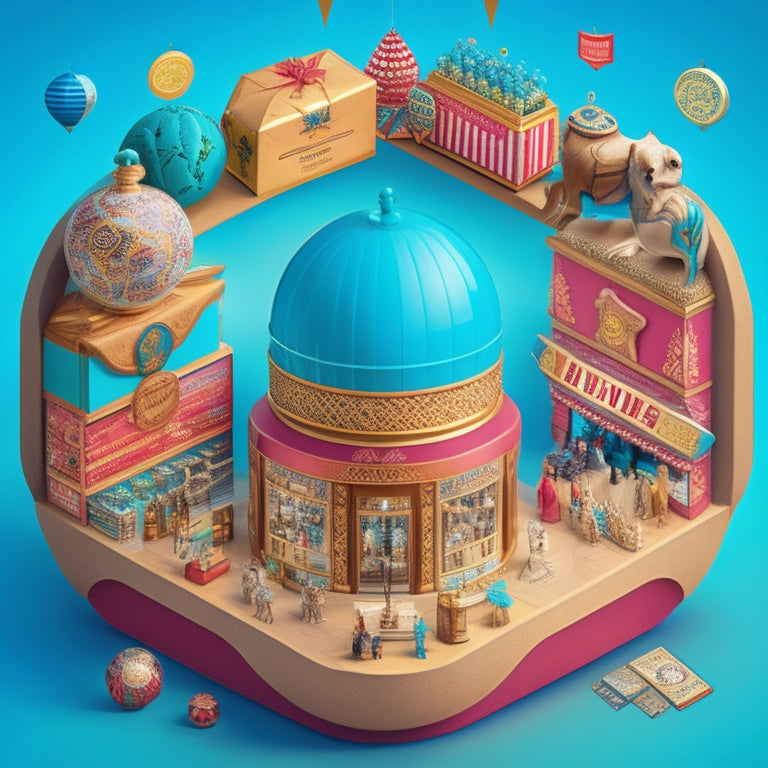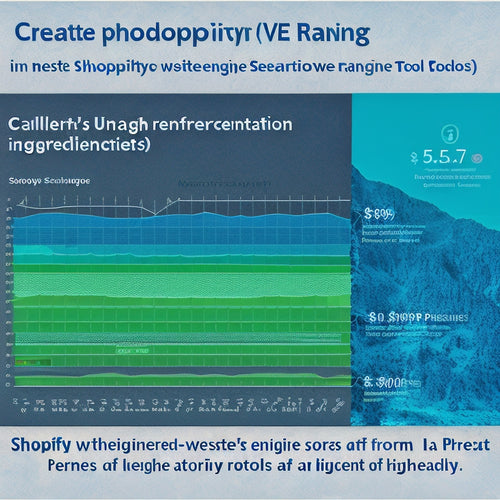
7 Innovative Loyalty Program Ideas for Merchants
Share
You want to take your loyalty program to the next level. Consider implementing a tiered rewards system, where loyal customers access exclusive benefits. Create FOMO with early access to new products and services, or make earning rewards a game with virtual currency and gamification. Alternatively, incentivize social sharing, surprise customers with customized experiences, or form strategic partnerships to tap into new markets. For a truly unique approach, design a personalized loyalty program that recognizes individual customers' preferences. Whatever you choose, the key is to think outside the box and make your customers feel valued. Discover how to make your loyalty program truly unforgettable.
Key Takeaways
• Implement tiered rewards to recognize and reward loyal customers, fostering a sense of accomplishment and motivating repeat business.
• Offer exclusive deals, early access, and VIP perks to create a sense of FOMO and make customers feel special.
• Incorporate virtual currency and gamification elements to make earning rewards a fun and engaging experience.
• Design a social sharing incentives program to reward customers for promoting your business online and encouraging community engagement.
• Surprise and delight customers with customized experiences, unexpected rewards, and exclusive access to new products or events.
Tiered Rewards for Loyal Customers
By segmenting your loyal customer base into distinct tiers, you can offer increasingly exclusive rewards that motivate repeat business and foster a sense of accomplishment.
This tiered approach allows you to recognize and reward your most valuable customers, encouraging them to continue their loyalty. By creating customized benefits for each tier, you can tailor your rewards to meet the unique needs and preferences of each group.
For instance, your top tier might receive premium services, early access to new products, or exclusive event invitations.
Implementing reward tiers also enables you to set clear goals and challenges for customers to push for, driving engagement and encouraging them to climb the ranks. As customers progress through the tiers, they'll feel a sense of achievement and recognition, deepening their connection with your brand.
Exclusive Offers and Early Access
With exclusive offers and early access, you can create a sense of FOMO (fear of missing out) among your loyal customers, making them feel valued and appreciated for their repeat business. This strategy is particularly effective when you offer VIP perks that aren't available to the general public.
For instance, you could give your loyalty program members sneak peeks of new products or services before they're released to the public. This not only creates anticipation but also makes them feel like insiders.
Limited releases and insider deals are also great ways to make your customers feel special. Consider offering early access to limited-edition products or exclusive bundles that aren't available to anyone else.
You could also provide insider deals on popular items, giving your loyalty program members a chance to snag them before they sell out. By offering these exclusive benefits, you'll create a sense of urgency and make your customers feel like they're part of an elite group. This, in turn, will increase their loyalty and encourage them to continue doing business with you.
Virtual Currency and Gamification
You can take your loyalty program to the next level by incorporating virtual currency and gamification elements that make earning rewards a fun and engaging experience. This approach not only increases customer loyalty but also encourages repeat business and positive word-of-mouth.
Here are some ways to incorporate virtual currency and gamification into your loyalty program:
-
Create a Rewards Marketplace: Allow customers to earn and redeem virtual currency for rewards, such as discounts, free products, or exclusive experiences.
-
Design Interactive Challenges: Develop interactive challenges, quizzes, or games that reward customers with virtual currency or badges for completing specific tasks or achieving milestones.
-
Offer Virtual Rewards Tiers: Establish virtual rewards tiers that reveal exclusive benefits, such as premium customer support or early access to new products, as customers accumulate virtual currency or complete challenges.
Social Sharing Incentives Program
Encourage customers to share your brand with their social networks by implementing a social sharing incentives program that rewards them for promoting your business online. This program can be a powerful tool to increase your brand's visibility and drive sales.
By offering referral bonuses, you can motivate your customers to share your brand with their friends and family, creating a ripple effect that can lead to new customers and increased revenue.
To make the most of this program, focus on community engagement. Create shareable content that resonates with your target audience, and make it easy for customers to share it on their social media platforms.
You can also offer exclusive deals or discounts to customers who share your brand, making them feel valued and appreciated. By leveraging the power of social sharing, you can create a loyal community of brand advocates who'll help drive your business forward.
With the right incentives and strategies, you can turn your customers into your most powerful marketing tool.
Surprise and Delight Loyalty Strategy
By injecting an element of surprise into your loyalty program, merchants can create a sense of excitement and gratitude among their customers, driving long-term loyalty and retention. This strategy is all about exceeding customer expectations and making them feel valued and appreciated.
Here are three ways to incorporate surprise and delight into your loyalty program:
-
Customized experiences: Offer personalized rewards or perks based on individual customer behavior or preferences. For example, if a customer frequently buys a particular product, surprise them with a free upgrade or a discount on their next purchase.
-
Unexpected rewards: Randomly reward customers with exclusive deals or discounts, just because. This can be done through email campaigns, social media, or in-store promotions.
-
Exclusive access: Give loyalty program members early access to new products, services, or events before they're available to the general public. This creates a sense of FOMO (fear of missing out) and makes customers feel like VIPs.
Partnership and Coalition Loyalty
Merchants can expand their loyalty program's reach and offerings by forming strategic partnerships with complementary businesses, creating a coalition loyalty program that rewards customers for their collective spending across multiple brands. This approach allows you to tap into a shared customer base, increasing engagement and driving loyalty across the board.
By partnering with businesses that align with your brand values, you can create a more thorough and appealing loyalty program that sets you apart from competitors.
Through coalition loyalty programs, you can capitalize on cross-promotion opportunities, launching joint campaigns that expose your brand to new audiences. For instance, you could partner with a popular restaurant chain to offer exclusive discounts to loyalty members who dine at their locations. This not only drives sales for both parties but also enhances the overall customer experience.
By working together, you can create a network effect that benefits all participating businesses, ultimately driving customer loyalty and retention.
Personalized Loyalty Experience Program
You can take loyalty to the next level by designing a personalized loyalty experience program that recognizes and rewards individual customers based on their unique preferences, behaviors, and purchasing patterns. By leveraging customer data and analytics, you can create a tailored experience that resonates with each customer. This approach not only increases customer satisfaction but also drives loyalty and retention.
Here are three ways to create a personalized loyalty experience:
-
Customized rewards: Offer rewards that are relevant to each customer's interests and needs. For instance, if a customer frequently purchases outdoor gear, offer them a discount on a camping trip or a free accessory.
-
Targeted messaging: Send targeted messages that speak to each customer's preferences and behaviors. This could include exclusive offers, early access to new products, or personalized product recommendations.
-
Individualized experiences: Create unique perks and experiences that make each customer feel valued and appreciated. This could include early access to sales, VIP events, or personalized consultations.
Frequently Asked Questions
How Do I Measure the Success of My Loyalty Program?
You gauge your loyalty program's success by tracking ROI, monitoring customer retention rates, and analyzing data to refine strategies, ensuring a strong return on investment and long-term customer loyalty that drives business growth.
What Is the Ideal Loyalty Program for Small Businesses?
Imagine a loyalty program that makes customers feel like VIPs, fostering strong relationships through personalized interactions. You'll strike gold with a program that balances customer engagement and reward structure, driving repeat business and fueling growth for your small business.
Can I Integrate My Loyalty Program With Existing CRM Systems?
You can integrate your loyalty program with existing CRM systems, streamlining customer data and enhancing benefits like personalized offers; however, you'll need to overcome challenges like API compatibility and data synchronization.
How Often Should I Communicate With Loyalty Program Members?
You might worry that frequent communication will annoy loyalty program members, but the best frequency is key; strike a balance by tailoring communication strategies to member feedback, ensuring engagement without overwhelming them.
What Is the Average Cost of Implementing a Loyalty Program?
When calculating the average cost of implementing a loyalty program, you'll need to evaluate a thorough cost analysis, including software fees, marketing expenses, and staff training, which can vary based on your implementation timeline.
Related Posts
-
Creating an Engaging Shopping Experience
In the age of digital shopping, businesses are constantly seeking innovative ways to engage customers and elevate th...
-
Creating Shoppable Videos: Boost Your Ecommerce Sales
Shoppable videos have emerged as a powerful tool for businesses looking to enhance their ecommerce sales. By combini...
-

Does Shopify Offer SEO Optimization
This article examines the question of whether Shopify offers SEO optimization. It aims to provide an objective and i...
